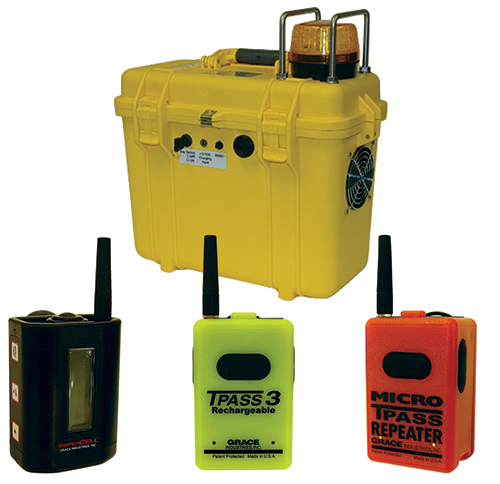Monitoring multiple confined space entries
Can I use one attendant to electronically monitor multiple 1910.146 confined space entries?

Responding is Dan Smith, director of sales and marketing, Grace Industries Inc., Fredonia, PA.
We are all aware of the concept of confined space monitoring: one attendant outside the permit-required or non-permit-required entry, monitoring the welfare of entrants inside the confined space. What if the operation has separate, multiple confined space entries at one time? Can one attendant be used to electronically monitor multiple 1910.146 confined space entries?
The best, and most clear, answer comes from a 1997 OSHA interpretation of 1910.146. In part, the interpretation states:
“The use of an electronic monitoring system is permitted by the standard. It is not intended to completely replace attendants, but to serve as an aid in the monitoring process. Its use does not automatically violate the standard, nor does it mean the employer is automatically in compliance withthe standard. It is really a matter of how the device is used. Properly used, it can effectively increase the number of permit spaces a single attendant is able to effectively and simultaneously monitor. The use of such equipment can actually perform some of the attendant’s duties better than the common practice of just having an attendant outside the space. Other duties, on the other hand, may need additional attendants to be properly satisfied.”
Terms like “RF radio frequency,” “radio telemetry” and “wireless signaling” all can be used to describe the term “electronic” as referenced in the OSHA interpretation.
In effect, electronic monitoring is not a silver bullet for compliance but does provide latitude for employers to realize efficiency while satisfying the duties described in Paragraph (i) of 1910.146.1
Last, when using electronic monitoring, training becomes more critical and a situation in which a fully competent entrant, attendant and supervisor must understand the proper use and limitations of electronic monitoring; and in which limitations are discussed, evaluated and recorded as part of their program. A good training program will include periodic evaluation and modification as necessary.
Electronic personal safety confined space monitoring systems can be used with two types of confined space entries:
- Non-permit-required entry: Evaluated and determined to be without hazardous atmospheres or the potential to contain a hazard.
- Permit-required entry: Evaluated to be with hazardous atmospheres, materials to engulf the entrant, potential to cause entrapment or asphyxiation, or any other serious safety or health hazard.
A stand-alone electronic confined space monitoring system paired with a stand-alone atmospheric monitoring system (gas monitor) provides flexibility to be used in both permit-required and non-permit-required entries. Flexibility is still the case for multiple entries that require their own specific gas or mix of gases to be monitored. Selecting a specific stand-alone gas monitor, along with a stand-alone personal safety confined space monitor, removes complexity and keeps it simple to use and easy to manage. What to look for in an electronic confined space monitoring system:
- Simple to use
- Easy to learn and train on
- Dual function: Attendant receives alarms and also sends evacuation signals
- Dual purpose: Use in both confined space and lone worker applications
- Dual application: Use with or without a stand-alone atmospheric monitors
Reference
1. OSHA standard 1910.146, permit-required confined spaces. Available at www.osha.gov/pls/oshaweb/owadisp.show_document?p_table=STANDARDS&p_id=9797.
Post a comment to this article
Safety+Health welcomes comments that promote respectful dialogue. Please stay on topic. Comments that contain personal attacks, profanity or abusive language – or those aggressively promoting products or services – will be removed. We reserve the right to determine which comments violate our comment policy. (Anonymous comments are welcome; merely skip the “name” field in the comment box. An email address is required but will not be included with your comment.)

